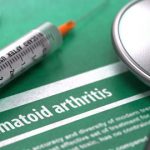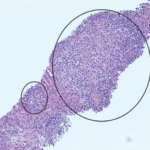NEW YORK (Reuters Health)—In patients with rheumatoid arthritis (RA) refractory to treatment with rituximab or tocilizumab, genetic profiling of synovial biopsies predicted the lack of therapeutic response better than a model using only tissue pathology or clinical factors, researchers say.1 “We believe this study is a paradigm shift in precision medicine in RA,” Dr. Costantino…

Researchers Should Use ACR/EULAR Definition of RA Remission in Clinical Studies
Clinical trials in rheumatoid arthritis (RA) should use the new ACR/EULAR remission definition rather than the Disease Activity Score-28-CRP, which does not sufficiently reflect patient outcomes, according to an ACR/EULAR committee.

Remission Definitions in RA: Common Questions & Implications for Clinical Practice
A recent editorial provides new insights by reexamining the definitions of remission for rheumatoid arthritis and outlining concerns with the use of specific metrics for remission in clinical trials.

DNA Methylation Profiles May Shed Light on the Evolution of Arthritis in Patients
A study found DNA methylation profiling may predict if a patient will progress from a diagnosis of undifferentiated arthritis to that of rheumatoid arthritis (RA). The findings also suggest a pre-established epigenetic signature exists in patients diagnosed with undifferentiated arthritis that evolves into RA.

Case Report: Intermittent Fevers in a Patient with pJIA
A 26-year-old woman presented to our emergency department (ED) with intermittent fevers, nausea and vomiting. She had a past medical history of well-controlled, anti-nuclear antibody positive and rheumatoid factor negative polyarticular juvenile idiopathic arthritis (pJIA) and Crohn’s disease. Her maintenance treatment consisted of monthly intravenous infliximab, 10 mg of oral methotrexate weekly and 20 mg…

The Power of Power Doppler: Ultrasound Imaging in RA
At the 17th Annual Advances in the Diagnosis & Treatment of the Rheumatic Diseases meeting, Dana DiRenzo, MD, MHS, RhMSUS, discussed the use of ultrasound imaging in patients with inflammatory arthritis.

Tissue Evaluation: Understanding Rheumatoid Arthritis Inside & Out
At the 17th Annual Advances in the Diagnosis and Treatment of the Rheumatic Diseases meeting, Clifton Bingham, MD, delves into research into rheumatoid arthritis at the cellular level.

An Oral Targeted Therapy: RheumMadness 2022 Pim Kinases Scouting Report
According to research, Pim kinases contribute to the pathogenesis of rheumatoid arthritis (RA) and may have the therapeutic potential for inhibition in patients with RA.
Lab Study Suggests Zinc May Worsen Rheumatoid Arthritis
NEW YORK (Reuters Health)—Zinc supplementation may exacerbate rheumatoid arthritis (RA), new laboratory data suggest. In monocytes from patients with RA, researchers found high concentrations of intracellular zinc, which regulates immune responses by affecting signaling pathways, according to a report in Science Signaling.1 They also found increased expression of Zip8, a zinc-specific importer, in peripheral and…

New Findings on COVID-19 Vaccination, Race & More Shared in 1st Plenary Session
Researchers shared findings on the immune response to COVID-19 vaccination in immunocompromised patients, insights into cognitive impairment in SLE & more.
- « Previous Page
- 1
- …
- 9
- 10
- 11
- 12
- 13
- …
- 76
- Next Page »